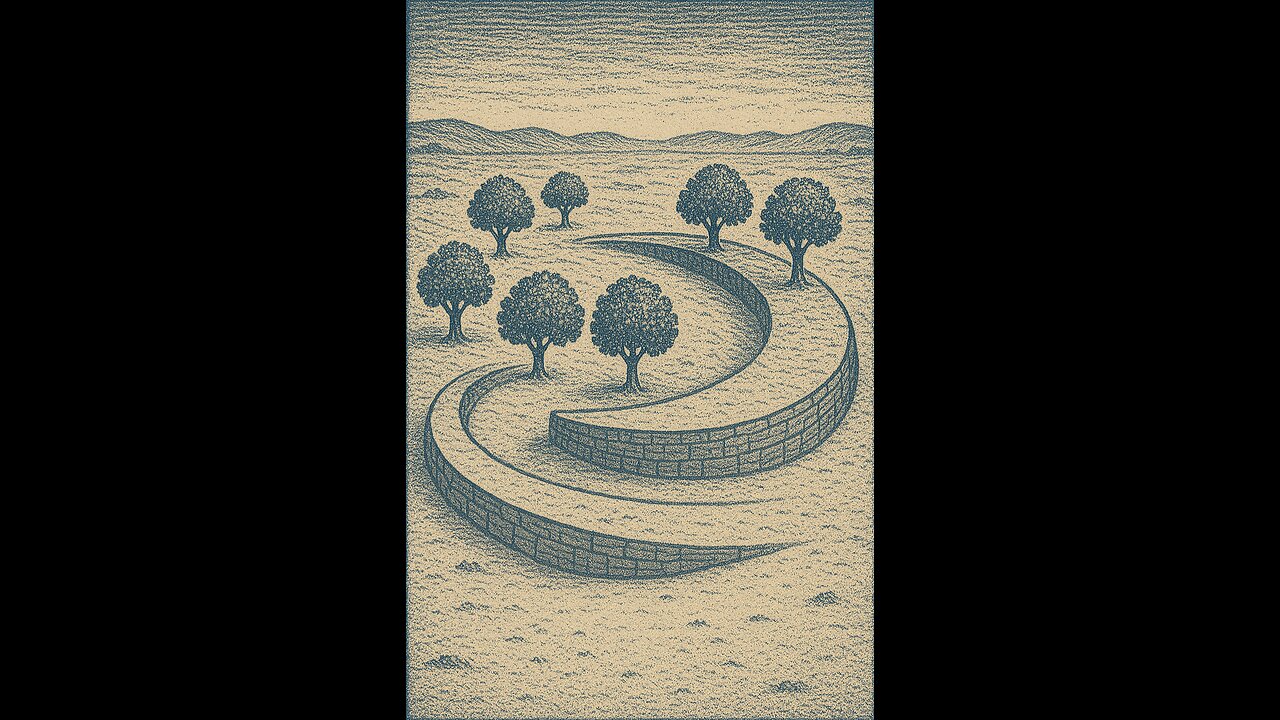Premium Only Content

Tanzanian Half-Moons
Across the African Sahel, demi-lune (half-moon) rainwater-harvesting structures have become a cornerstone of landscape restoration, contributing—often together with other soil-and-water conservation measures—to the rehabilitation of hundreds of thousands of hectares: coordinated Sahel programmes reported restoring on the order of 300,000–420,000 hectares of degraded land in recent years, much of it via community-built demi-lune sites and similar catchments.
The half-moon itself is a semicircular pit roughly 2–3 m across and 0.15–0.30 m deep that traps runoff and increases infiltration, and agronomic guidance typically specifies hundreds of demi-lunes per hectare (often ~250–300) to achieve full coverage for tree or shrub planting.
Program evaluations and NGO reports note that a single trained farmer can rehabilitate about one hectare per season using mechanized or manual demi-lune construction, making the technique highly scalable when combined with initiatives like the Great Green Wall and Sahel restoration programmes.
-
 15:38
15:38
Cash Jordan
4 hours agoPortland Zombies EMPTY 52 Stores… Mayor FREAKS as “Sanctuary” SELF DESTRUCTS
23.9K27 -
 1:56:46
1:56:46
Redacted News
3 hours agoHIGH ALERT! Trump pushes "land war" in Venezuela, and Russia goes nuclear | Redacted News Live
114K80 -
 16:47
16:47
Robbi On The Record
2 hours ago $0.92 earnedThe Day Seeing Stopped Meaning Believing | Sora, AI and the Uncanny Valley
14.7K16 -
 9:54
9:54
Dr. Nick Zyrowski
1 day agoDoctors Got It Wrong! What High Cholesterol REALLY Means...
14.5K3 -
 LIVE
LIVE
Tundra Tactical
2 hours agoProfessional Gun Nerd Plays Battlefield 6
130 watching -
 1:06:06
1:06:06
vivafrei
5 hours agoAnother Illegal Alien Kills Americans! Candace Owens Promises to Violate Kirk Gag Order? & MORE!
120K34 -
 1:42:30
1:42:30
The Quartering
5 hours agoTrump Blamed For NBA Rigging Scandal, Major X Change Renders Site Useless, Church Nonsense
149K47 -
 4:18:11
4:18:11
MattMorseTV
7 hours ago $51.62 earned🔴Trump makes URGENT ANNOUNCEMENT.🔴
88.4K91 -
 12:05
12:05
Clintonjaws
10 hours ago $10.23 earnedPortland ICE Rioters Getting Arrested - This Is Priceless!
53K27 -
 LIVE
LIVE
Side Scrollers Podcast
7 hours ago🔴FIRST EVER RUMBLE SUB-A-THON🔴DAY 4🔴WAKE YOUR ASS UP!
953 watching